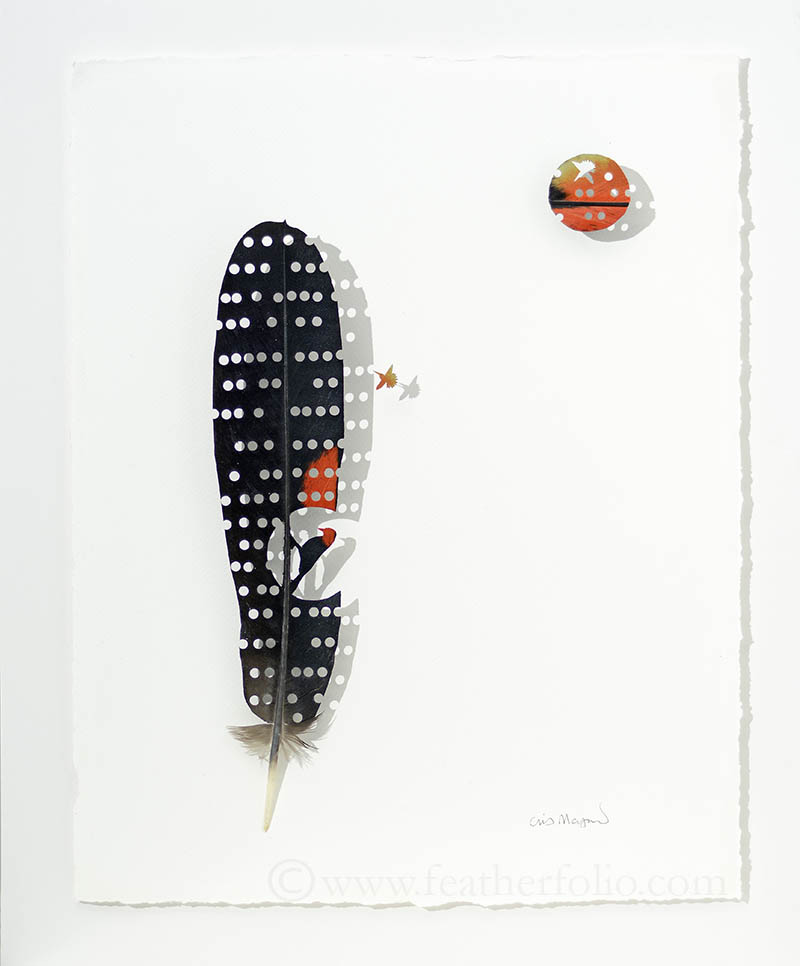Mixed Flock.
On the side of a mountain under a ponderosa pine, a warm October sun lulled me into a sleepy happy place. Plop! Something small and hard fell on my face interrupting my dreams. Opening one eye, I spied a white breasted nuthatch working the tree over, looking for bugs by prying up loose bark, which rained down around me.
Lying there, occasionally dodging falling bark, I watched a flock of them for an hour. What struck me (besides the bark) was the agility and intensity of these little birds. They looked in every nook and crevice, upside down under branches, sideways, and on the trunk.
At 17 by 14 inches, this piece is made from two turkey feathers.

















